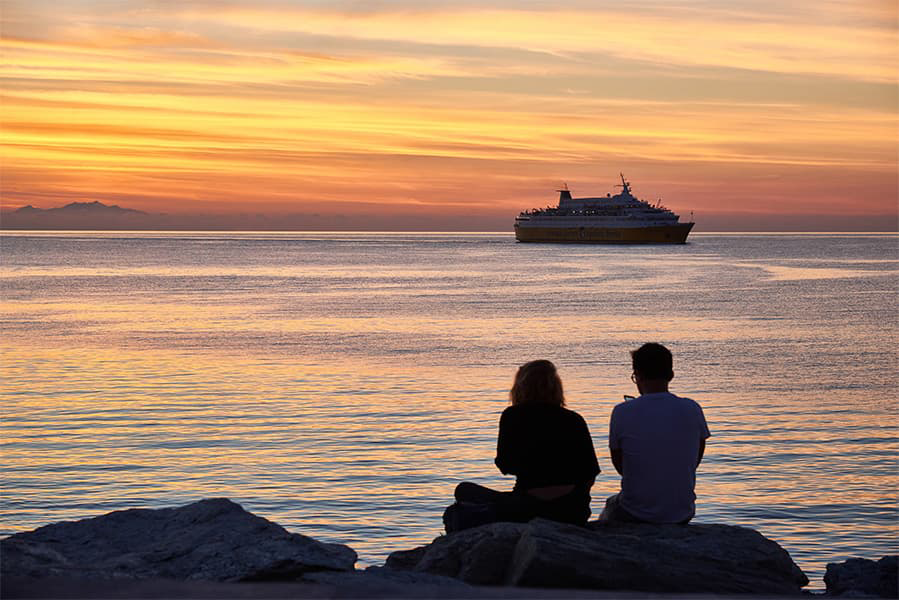Palau – Bonifacio
Ferry to Corsica
Palau – Bonifacio
Ferry to Corsica

The Palau Bonifacio ferry route is currently not sailing. Palau Bonifacio sailing durations and frequency may vary from season to season. View our Deal Finder for alternative routes and compare prices, times and schedules.
More routes than anyone else.

Compare fares, times & routes in one place.
Change plans easily with flexi tickets.

Book e-tickets & manage trips in-app.
Live ship tracking & real-time updates.

Top-rated customer support when you need it.
Palau is a large tourist town on the northern-most tip of the Sardinian coast and stands in front of the archipelago of La Maddalena.
The tourist marina lies to the south of the berthing area reserved for the ferries to Palau and during the summer months it is full of boats of all shapes and sizes.
The town has grown considerably in recent years, with complexes of villas and apartment blocks springing up along the coast.
Today, the town is an autonomous municipality and has earned itself extraordinary success in the panorama of international tourism. Palau, with its coastline artistically moulded by nature, is one of the places most adapt for carrying out sailing and windsurfing activities. Towards the end of the last century, the area began to be populated by fishermen and farmers.
Bonifacio is a city located on the southern tip of the French island of Corsica. It lies on the Mediterranean Sea coast and is separated from the Italian island of Sardinia by the Strait of Bonifacio, which is around 11 km wide. The city, which is home to the island's only harbour on the south coast, is a popular visitor destination during the summer who flock to the city's beaches and also because of its historical monuments which include Torra di Sponsaglia, Torra di Saint' Amanza, Eglise Sainte-Majeure de Bonifacio and Eglise Saint-Dominique de Bonifacio.
There are two important prehistoric sites near to the city. The chambered tomb of Vasculacciu which is located near Figari to the north of the city and belongs to the Megalithic Culture and dates back to the Middle Neolithic. The second is the ancient cave shelter of Araguina-Sennola near the village of Capello which is the site of the Lady of Bonifacio, a female burial site carbon dated to around 6570 BC, and is either late Mesolithic and Early Neolithic. The alignment of the two and the extensive use of chert from Monte Arci in Sardinia shows that the Bay of Bonifacio was a route to inland Corsica from the earliest times.